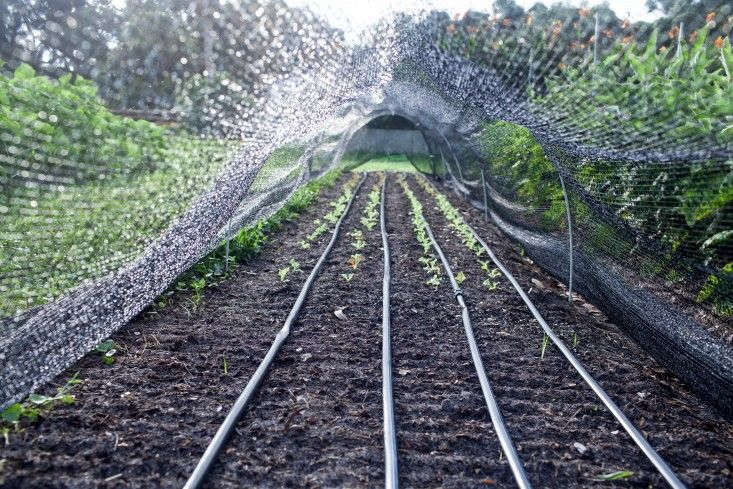I don’t know anybody who’s not worried about water. There’s either too much of it or too little. In California, where I live, we recently experienced the worst drought in a century. In New York, where my friends live, sea levels are rising so fast that LaGuardia Airport may become a modern version of the lost city of Atlantis by 2100.
Can one person with one garden–you, for instance, or me–help? Yes, says graywater crusader Sally Dominguez. Studies show that from 50 to 80 percent of household water could be recycled as graywater, creating huge savings. Here are Dominguez’ top tips:

The Rainwater Hog designed by Dominguez is a plastic 53-gallon tank that can store water vertically or horizontally, against the side of the house or beneath a deck, depending on where you have the space to store it. “It’s modular–think of each tank as a building block of Lego–and you can create a system using multiple tanks,” she says. For pricing and information, see Rainwater Hog.
In Australia, where drought is a way of life, using graywater is second nature. “In Sydney, where we could get fined $200 for watering the lawn or washing a car, I had friends who wanted something sleek and discreet to capture and store rainwater,” says Dominguez, who designed the Rainwater Hog tank in 2004 at the height of drought-induced water restrictions in Australia.
Remodeling? This is a grand opportunity. You can have your water plumbed so laundry and shower water drains into a holding tank for garden use.
1. Collect water in the shower. Before you turn on the faucet to heat up water to take a shower, place a bucket or pail on the floor to catch running water. Use that bucket to water garden plants.
2. Put a bowl in your kitchen sink to catch clean water. (But don’t save dirty dishwater: grease and animal fats from food can cause problems in the garden, by attracting vermin or breeding germs.) “It’s unbelievable how often the faucet is running–it’s a reality check,” says Dominguez. “You can use the water in the bowl to water your plants a little.”
3. Use drip irrigation in the garden. It’s more environmentally friendly than sprinklers or sprayers–and better for most plants. “You use less water, and you deliver it more efficiently to the root system by dripping,” Dominguez says.

4. Keep your lawn, but water it with graywater. Drain water from the clothes washer and the shower into a holding tank and recycle it by using it on the lawn.
“Don’t give up your lawn–my take on it is this: when we moved here from Australia, we went to a house for a cocktail party and saw this lush lawn. My kids and I couldn’t believe it. It looked so rich and inviting we all immediately took off our shoes and walked in it. A lawn is a beautiful, emotional thing, like a pool, and it has an emotional value. It makes a garden look beautiful and serene,” says Dominguez.

5. Collect rainwater–but don’t use it in the garden. “Bring rainwater into the house and use it to wash clothes. Then use the graywater from the laundry in the garden,” says Dominguez. “That way you cut down on your use of city water, too.”
6. One exception: use rainwater on the vegetable garden. “Anything you’re going to eat gets rainwater; the rest of your trees and plants can be watered with graywater,” she says.

7. Use a biodegradable laundry detergent. This will ensure the gray water from your washing machine won’t harm plants.
N.B.: This post has been updated with new photography; it was first published February 2014.
For more ways to conserve water, see:
- 11 Tips for Designing a Water-Conscious Garden
- 11 Ideas to Steal from Drought-Tolerant Gardens
- Expert Advice: How to Counter Climate Change in Your Garden
- Your First Garden: The Right Watering Method for Your Garden








Have a Question or Comment About This Post?
Join the conversation